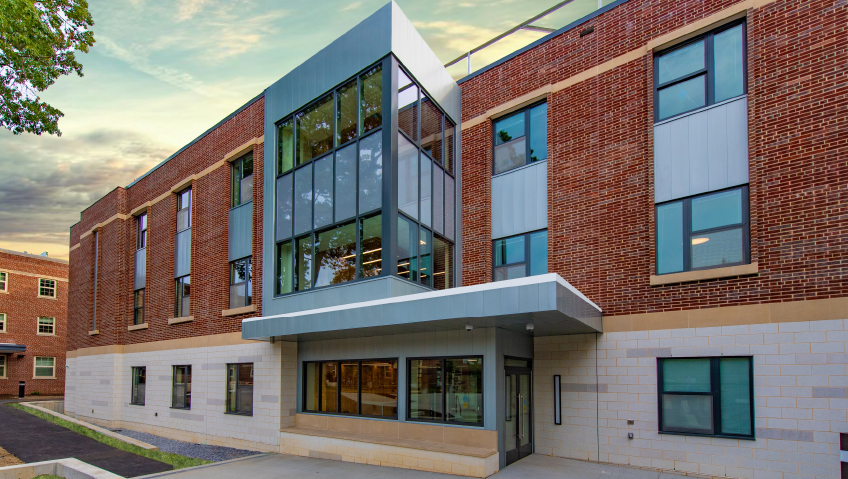The University of Virginia was founded by Thomas Jefferson in 1819, including his Academical Village, a series of Greco-Roman-inspired interconnected buildings. And at the center of it all is the university’s original library, the Rotunda.
All of these buildings are laid out on a 200-foot-wide open lawn. Here was where holistic learning would be brought to the student – where students and professors could actually live together in a community of learning.
But before getting in too deeply, what is a rotunda anyway? It is simply a circular building often covered by a domed roof. Think of a bandstand but more elaborate. Some of the most famous rotunda structures are that of the Capitol building in Washington, D.C., and the Pantheon in Rome. In fact, Jefferson based his design on the Pantheon, but about half the size.
The construction of the university’s building was hardly a smooth process. There were numerous delays and problems, including a leaky dome, and it was not fully completed until 1832, six years after Jefferson’s death.
In the original design, two wings were designated for classrooms. Following the initial construction, a four-storey wing was added to provide more classrooms as well as laboratories and an auditorium.
Today, the Rotunda and the Academical Village are recognized as a UNESCO World Heritage site and considered an icon of American design.
The start – a beating heart
Jefferson’s intent was not just to have the building as a symbol, uniquely loved as it was, but for it to be the fully functional heart of the campus, and for students to attend classes and use the library there. But, as time passed, the building became less a part of everyday life for students and more of a backdrop for campus events. There was the wear and tear over the years that led to holes in the roof, columns that were beginning to crumble and drop marble, and utilities in the building that were wearing out.
Then, in 2014, an ambitious project was launched for the restoration of the Rotunda, returning it to its central role on campus as Jefferson intended. Before any shovels hit the ground, however, the restoration process began with a lot of research – two years, to be precise. As the Journal of the American Institute of Architects said, “The project tapped into some of the most advanced conservation measures available,” which made the whole restoration as much of an archaeological project as an architectural one.
Rebirth of an icon
The project didn’t actually start with the Rotunda itself, but rather with enhancing the support of the structure before the restoration proper began. This involved substantial excavation work as well as the underpinning of the building to strengthen the venerable walls.
Quoted in Susan Svrluga’s 2016 article for The Washington Post, Jefferson’s iconic Rotunda is restored at the University of Virginia — and you’re invited, Brian Hogg, senior preservation planner in the Office of the Architect for the University, said that, “there was a series of lasers that shot beams at crystals all around the building.” This was to monitor the stability and steadiness of the structure during the process.
The slightest movement would have triggered immediate stop-work signals. Suffice it to say, the operation was a masterclass in precision, and the Rotunda stood firm.
The team also needed to dig around the building to create a mechanical room, tucked away from the building, to house new air conditioning, wiring, plumbing, fire and safety controls, and wireless communications systems.
This was not the first renovation of the Rotunda. In 1895, a massive fire broke out that virtually destroyed the building. The cause was probably faulty wiring and fire quickly spread from the annex’s upper northwest portion. Faculty and students rushed to salvage artworks and books. The situation became so extreme that dynamite was used to try to separate the connecting portico from the Rotunda in an effort to save it.
In the aftermath of the fire, as plans were made to rebuild, one of the stipulations, unsurprisingly, was to incorporate fireproof materials which had the added benefit of being impervious to rot, insects and the elements. But the overall approach to the rebuild would have a lasting impact on how it would fit into campus life.
The architectural firm hired to head the 2014 rebuild, New York’s John G. Waite Associates, made many changes from Jefferson’s original plan. Most notably, the upper oval floor was removed, extending the dome from the main floor up. The argument for removing the floor was that the architects felt that the third story was not included by Jefferson because there was need for a classroom but his intention was really to create an open space.
At the time, two wings, to the east and west, were added to the site. But this left the Rotunda as more of a monument than a functional campus building.
Work on the building took place in several areas. One of the crucial issues was the leaky roof which was replaced with a copper one.
Inside the Rotunda, attention went to the architecture of the three floors. In 1970, renovation on the interior of the dome room included white plaster column capitals. These would be replaced by carved wood including mahogany which better matched the original character of the building.
Spirit of science
The painstaking project not only restored the structure, but also uncovered a significant historical find – a chemical hearth that was recognized as America’s first chemistry lab.
This vestibule was built for heated flames as part of chemical reactions. It was the only element of the original building that survived the fire and one that provides a window into how science was taught at the time of Jefferson.
In the rebuilding that took place in the 1850s, the hearth was hidden by newly constructed walls, but these also protected the hearth from the fire in 1895.
More research revealed that there was a back and forth between Jefferson and the university’s professor of chemistry about the need to expand the chemistry courses, which lead to the hearth’s construction. Now it is on permanent exhibition, celebrating Jefferson’s original design.
The interior work also brought the Rotunda back to its original intent – a building to be used every day by students. The restored building now has rooms that hold classes five times a week, as well as an expanded study space with the opening of new areas that had been roped off in the past.
A living future
The Rotunda is once again a hub of social activity with the re-launching of the tradition of Dome Room Dinners, formal events for students grouped by residence hall associations. In fact, The Washington Post has written about how the restoration returned the building to the daily life of the University of Virginia.
In the article, a student talks about what the change means to him and his peers. “I have so many friends that have never once set foot in the Rotunda,” says Connor Andrews, a graduate student who worked in the Rotunda as an undergraduate before the renovations. “Now they’re all psyched that they can come back and experience that.”
In the end, the restoration cost $58 million and won a 2019 AIA Institute Honor Award for Architecture. It took about two years during which the Rotunda was closed to students. In many ways, the restoration was about bringing the famous building full circle as the centerpiece of its Charlottesville campus, while making it sturdier and safer for generations of students and teachers to come.
When you think about this treasure – a beautiful, iconic, historic building with direct ties to one of the greatest Americans – it’s nice to know that it will once again enter students’ lives as a day-to-day part of their educational experience.






